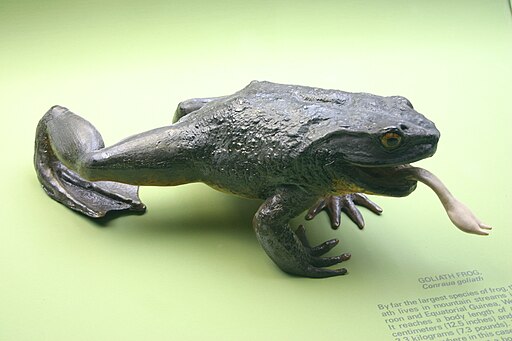It is true that a person who sticks out his/her tongue is considered to be immature,childish etc. But in case of some animals, it is a matter of their survival.
The reptiles, like snakes, who frequently flicker their tongue, are doing it for the reason of smelling (to capture scent particles) and not because they are hungry.
Chameleons do have their own uniqueness about their tongues. Their chief weapon which they use for hunting is not the tongue but the sticky adhesive on their tongue which helps them in catching insects. Also, there are species of chameleons whose tongues are longer than their bodies giving them enough flexibility to catch far away insects.Again in this list, amphibians are no exception. Batrachians ( frogs and toads) use tongues only single utility- for catching their prey.
Moving now from amphibians and reptiles, there are some mammals who use their tongues for even better purposes. Towering beasts - giraffes extend their black colored, prehensile tongues from their mouth for plucking the Acacia leaves from the tree.Also, they use their 18-20 inches long tongue to clean their ears.
Towering beasts - giraffes extend their black colored, prehensile tongues from their mouth for plucking the Acacia leaves from the tree.Also, they use their 18-20 inches long tongue to clean their ears.
Scaly anteaters called pangolins have incredibly long tongue to feed on ants and termites and they can stretch their thin, long tongues into very narrow lanes of termite mounds. No need to use its claws to break open the termite mounds. This makes them one of the animals with longest tongues.
Both domestic and wild cats do have another rough feature on their tongues called as horny papillae used for grooming and rasping the liquid part of the flesh.
The reptiles, like snakes, who frequently flicker their tongue, are doing it for the reason of smelling (to capture scent particles) and not because they are hungry.
 |
| Image courtesy of [by africa] at FreeDigitalPhotos.net |
Moving now from amphibians and reptiles, there are some mammals who use their tongues for even better purposes.
 Towering beasts - giraffes extend their black colored, prehensile tongues from their mouth for plucking the Acacia leaves from the tree.Also, they use their 18-20 inches long tongue to clean their ears.
Towering beasts - giraffes extend their black colored, prehensile tongues from their mouth for plucking the Acacia leaves from the tree.Also, they use their 18-20 inches long tongue to clean their ears. Scaly anteaters called pangolins have incredibly long tongue to feed on ants and termites and they can stretch their thin, long tongues into very narrow lanes of termite mounds. No need to use its claws to break open the termite mounds. This makes them one of the animals with longest tongues.
Both domestic and wild cats do have another rough feature on their tongues called as horny papillae used for grooming and rasping the liquid part of the flesh.








